England should not fear New Zealand – here is how they can beat them
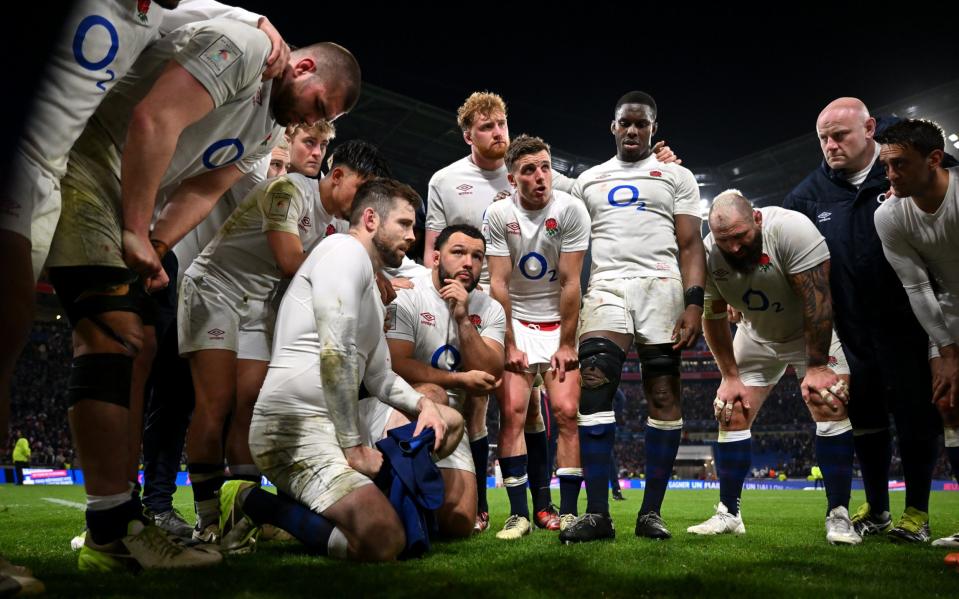
On the back of two improved performances to end the Six Nations, a trip to New Zealand seems exciting rather than ominous for England.
There is also the prospect of Steve Borthwick’s rendezvous with Eddie Jones in Japan as the erstwhile allies come together for their first contest as rival head coaches. That game in Tokyo comes on June 22, a fortnight before England’s first game against the All Blacks, which has traditionally represented their best chance of victory on a summer tour as the southern hemisphere giants shake off rust.
As challenges go, facing the World Cup finalists is a compelling one. These are six things Borthwick will be considering ...
Improve transition defence
England’s first five matches in Felix Jones’s blitz defence system were reasonably impressive. By shooting off the line and flooding the 13 channel, they often sacked carriers behind the gain line or funnelled runners down blind alleys.
There was enough to suggest England should stick with this ultra-aggressive approach, although they will want it to come together more quickly than the 14-match gestation period that Jacques Nienaber proposed.
Ultimately, in the two matches they lost, England were badly hurt by their fragility in what are known as ‘transition’ scenarios. Duhan van der Merwe’s second and third scores at Murrayfield, as well as two of France’s three tries in Lyon, both of which arrived from lost line-outs, can be put in this category. Elliot Daly’s slip, which allowed Gaël Fickou to go clear from Damian Penaud’s offload, was unfortunate. But it was part of a trend.
Rewinding to the start of February, Italy sliced through twice within three phases of gathering an England kick. Alessandro Garbisi scurried over, via Lorenzo Cannone’s break, before Tommaso Allan finished a flowing counter that picked off a floundering defence. For the latter, Daly was left horribly exposed by his team-mates’ sloppy spacing – several England players were marking fresh air on the far side of the breakdown – yet carried on pressing without a hope of stunting the attack. It could have been an encyclopaedia example to illustrate teething problems with new defensive principles.
Ireland’s first try at Twickenham, bagged by James Lowe, came after Hugo Keenan had risen to regather Jamison Gibson-Park’s box-kick. The visitors swept the ball left, their slick handling beating the scramble.
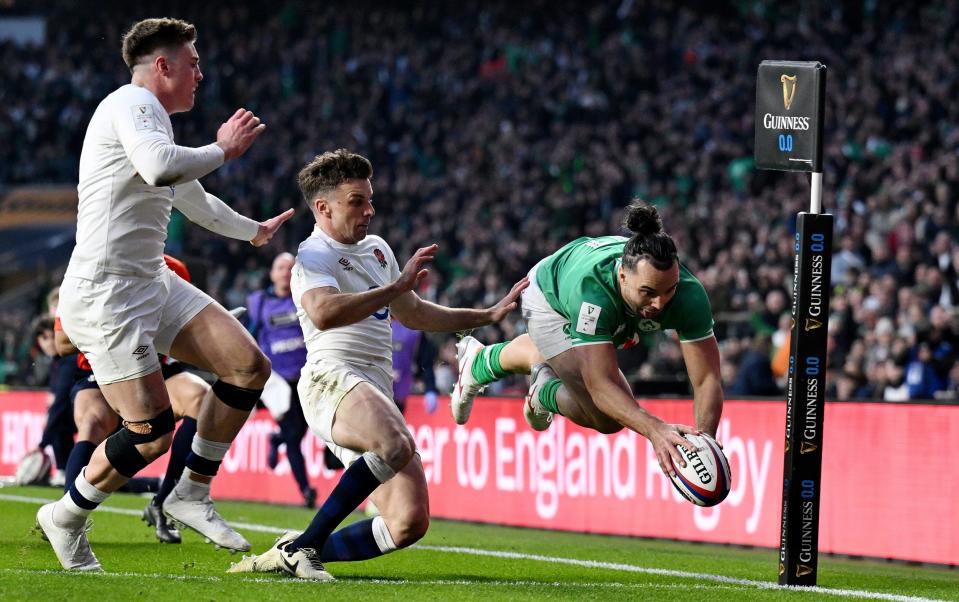
Of the 13 tries conceded by England during the Six Nations, 10 were scored within the first three phases of an attack. Four of the 13 followed turnovers, according to Stats Perform. No other team shipped more than two from that source.
While the All Blacks are facing something of a new beginning under Scott Robertson, it is a safe bet their transition attack will be lethal. Robertson’s Crusaders teams were famed for how they collectively clicked into action to seize these opportunities. And, of course, New Zealand always have the athletes to eat up open space. When they beat Ireland 42-19 in July 2022, they needed just 86 rucks in possession to score six tries. Their opponents gave up 20 turnovers, and paid the price.
Defending in transition requires mutual understanding, which takes time to develop. For instance, if a player shoots up to shut down space, their colleague on the outside must follow them. Tommy Freeman did not connect with Henry Slade quickly enough as France moved the ball across their 22 on Saturday, at the start of the move that swept Nolann Le Garrec over the try-line.
It also requires one-on-one tackles to stick. Defending in open space and on the edge of the line is a specific skill, too. Sometimes, when attackers are swarming, defenders must ‘soften’, or backpedal and jockey carriers towards the touchline to buy time for team-mates. Adding more pace to the team is always handy, too.
Start Immanuel Feyi-Waboso
Two cameos from the bench prior to Feyi-Waboso’s single start add up to a total of 101 minutes on the pitch. He was not overworked in his maiden Six Nations. Indeed, when the 21-year-old wing was ruled out of the game in France with a self-reported concussion, Richard Wigglesworth praised Borthwick for how gradually and carefully this introduction had been handled. And yet, Feyi-Waboso’s impact was significant. His withdrawal from the party to travel to Lyon immediately felt like a blow.
From Christian Wade and Ollie Thorley to Adam Radwan, Ollie Hassell-Collins and Henry Arundell, there has been a feeling that England have not handled ‘X-factor’ back-three players particularly well over recent years. Feyi-Waboso is different. The medical student seems to possess a rare blend of attributes. Borthwick clearly trusts him because of his intuition and rugby intelligence. That has evidently made him easier to pick, and his dynamism could be transformative for England. The outside break against Ireland, which epitomised his confidence and conviction, helped win the game.
Feyi-Waboso can track attacks to pick up touches around the field, as he did for his try at Murrayfield, and is already assured in less glamourous aspects such as kicking exchanges. He and Slade are operating together in a blitz system at Exeter Chiefs, which will aid England’s defensive cohesion as well. Comparing Feyi-Waboso to Mark Telea in this article two months ago felt slightly premature. It feels less farfetched now, and the pair should come face to face in July.
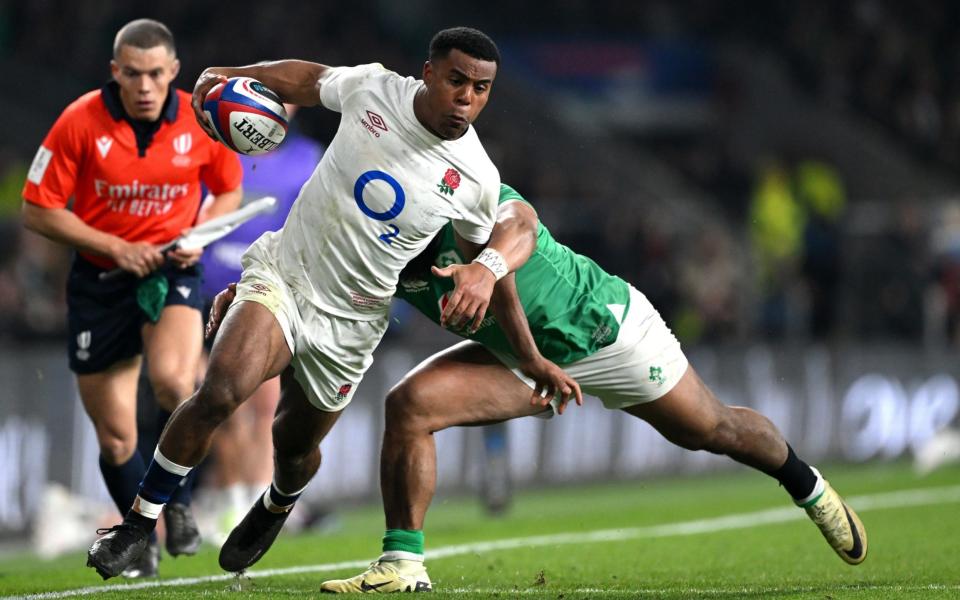
Add depth down the spine …
In the wake of senior figures such as Owen Farrell and Courtney Lawes making themselves unavailable, Borthwick will have been heartened by how the next layer stepped up. That cohort of players, numbering between 10 and 35 caps, included Ben Earl, Ollie Chessum, Sam Underhill, Alex Mitchell and Ollie Lawrence. Blooding fresh faces this summer will not necessarily improve England’s chances of beating the All Blacks, but there is a pressing need to develop depth in certain positions; especially at scrum-half, at inside centre and in the front five. Fin Baxter and Tarek Haffar would be exciting additions at loosehead prop and Theo Dan’s tally of 85 minutes across five Six Nations matches underlines the continuing reliance on Jamie George. More tighthead props are essential. Joe Heyes started for England A against Portugal. More intriguingly, Josh Iosefa-Scott came off the bench. Could the latter return to the land of his birth?
Scrum-half remains interesting. Ben Spencer was not a travelling reserve for the France game, with Harry Randall taking his place. Will Jack van Poortvliet return? Raffi Quirke, conspicuously named on the rehabilitation list at the beginning of the Six Nations, would dovetail nicely with Alex Mitchell in a match-day squad if he can stay fit.
Inevitably, Lawrence and Henry Slade improved with time together and looked sharp in Lyon. The latter’s poise at first-receiver gave Lawrence more carrying opportunities in the 13 channel. Max Ojomoh has obviously impressed Borthwick and is a versatile, athletic option capable of covering both centre positions. England had both Lawrence and Manu Tuilagi in their 23 at the World Cup and finished with both on the pitch on Saturday night. Ojomoh, you sense, could be the deputy centre sooner rather than later.
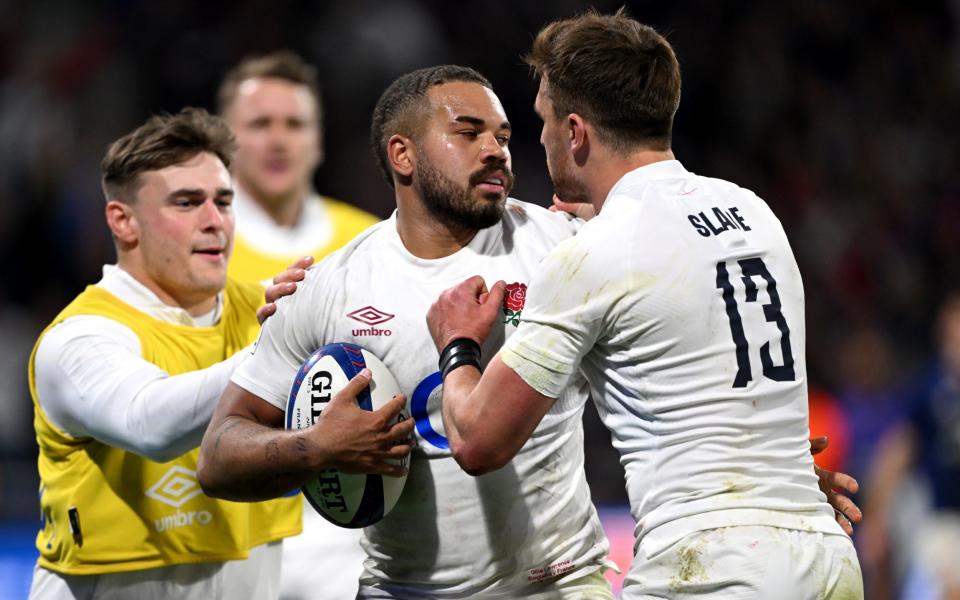
… and bulk up the pack
The loss to France will be a source of lingering regret for England because their opponents had plenty of unfamiliar combinations and inexperienced individuals. Borthwick’s charges deserve praise for overhauling a 16-3 deficit. However, from 24-16 up, and then with a 31-30 lead in the 77th minute, they should have closed it out.
More painful, as captain George admitted, was the sense of déjà vu, because France emptied a six-two bench, as South Africa did in the World Cup semi-final, and regathered impetus. New Zealand will field a flinty pack of forwards. In the final, do not forget, they stood up to the Springboks scrum. At the death, they almost splintered South Africa against the put-in.
Ethan de Groot and Tyrel Lomax are likely to be Robertson’s starting props and England will need the best of Ellis Genge. They may need additional heft. George Martin already seems important and went the entire 80 minutes against both Ireland and France. Borthwick opted against a specialist lock on the bench, fielding two back-rowers there instead for the last two rounds after Chandler Cunningham-South was injured. Whether or not that ploy continues, or whether an extra second row such as Rus Tuima is added, Aled Walters will need to earn his corn to have the forwards fighting fit at the end of an arduous season.
Continue to vary the attack and help Ben Earl …
Earl’s campaign was an endorsement of Borthwick’s vow to bring players’ ‘super-strengths’ to the Test arena. The 26-year-old relishes carrying. According to Stats Perform, he amassed 73 carries during the Six Nations. That amounted to 15.4 per cent of England’s total carries in five matches; the highest proportion of any individual player in the tournament (Monty Ioane was next with 10.5 per cent of Italy’s carries) and simply a mammoth, possibly unsustainable work-load.
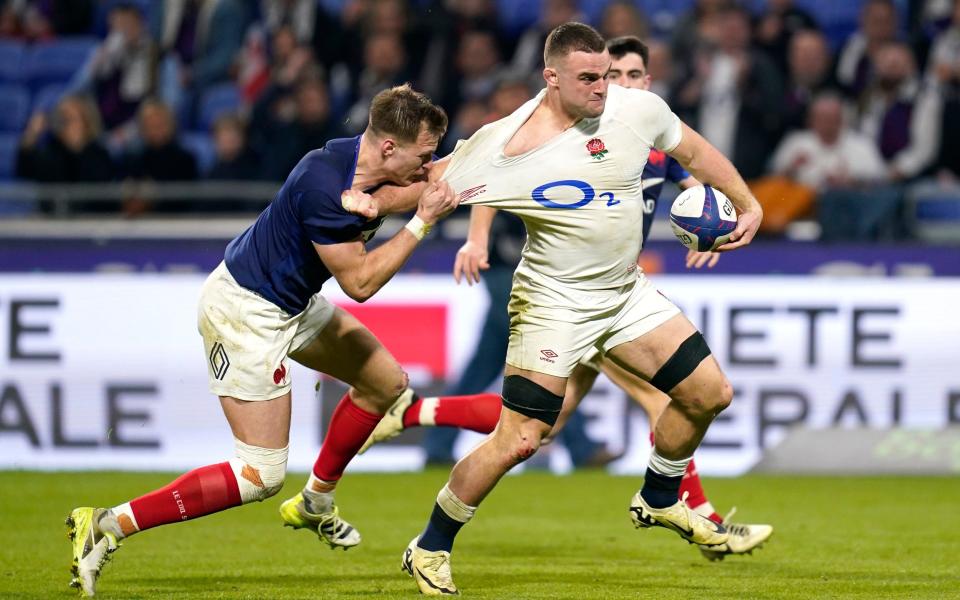
The presence of a bopping No 8 such as Alfie Barbeary or Tom Willis to join Earl could ease that burden and pose additional threats. Of course, Earl should continue to be used cleverly. From the base of the scrum, in midfield from line-outs – with Genge and Lawrence around him – and when allowed to unbalance defenders with footwork, he is exceptional. Elsewhere, England will endeavour to maintain the ambition that shone through in their best moments against Ireland and France. With George Furbank at full-back, kick-return yielded two tries. To oust the All Blacks, you have to score points.
… but enhance their jackal threat
South Africa’s blitz was underpinned by a fleet of potent jackallers including Malcolm Marx, Siya Kolisi, Kwagga Smith, Damian de Allende and others. Smith’s turnovers were arguably the difference in the World Cup final. Although Earl, Sam Underhill and Maro Itoje mucked in, England could complement their line-speed with more breakdown spoiling.
They have not won in New Zealand since the famous Wellington game of 2003, when Martin Johnson’s side survived a pivotal series of scrums with 13 men. Before that, England’s previous away victory over the All Blacks was at Eden Park in 1973. A record of two triumphs in half a century reinforces what a rare result Borthwick’s side are chasing. And yet, supporters can now have hope.

 Yahoo Sport
Yahoo Sport 





































